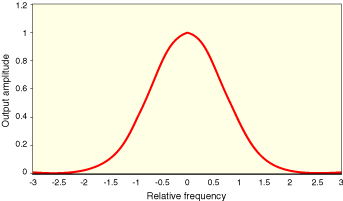Adapting To Market Conditions
Measuring Cycle Periods
Measuring cycle periods allows you to adjust your indicators so they adapt to current market conditions. Here's how.
IF you want to make your indicators and strategies adaptive to current market conditions, you must first measure the cycle periods that are present in the data. Given that you know the dominant cycle, you can then use that information to dynamically adjust your computations. For example, you can set the observation period of the relative strength index (RSI) to be half the dominant cycle. I have previously described a practical way to use direct Fourier transform (DFT) to estimate the market spectrum. But a DFT is not the only way to estimate the market spectrum.
USING BANDPASS FILTERS
In this article I describe a way to use bandpass filters to make the spectral estimate. Bandpass filters are advantageous in that the selectivity and the filter transient response can be controlled. This is important because not all filters are good for trading, since filters induce lag in the output and therefore cause a delay in your making trading decisions. In general, the more complicated a filter, the more lag is induced. The simple two-pole bandpass filter is nice because it provides no lag at the output for a steady state input signal at the frequency to which the bandpass filter is tuned.
First, let's understand some basics about bandpass filters. The response
of the filter can be seen in Figure 1. This means that when equal amplitude
signals at all relative frequencies are applied to the input of the filter,
the filter rejects frequency components that are both higher and lower
than the filter's tuned frequency. The frequency components at the output
of the filter have their amplitudes shaped by the filter. The region within
relative frequencies -0.5 to +0.5 is the passband of the bandpass filter
because most of the energy getting through the filter falls in this range.

FIGURE 1: BANDPASS FILTER RESPONSE TO NORMALIZED FREQUENCIES. Here you see the response of the filter. Note that most of the energy getting through the filter falls within relative frequencies of the -0.5 to +0.5 range.
...Continued in the March issue of Technical Analysis of
STOCKS & COMMODITIES
Excerpted from an article originally published in the March 2008
issue of Technical Analysis of
STOCKS & COMMODITIES magazine. All rights reserved. © Copyright
2008, Technical Analysis, Inc.
Return to March 2008 Contents